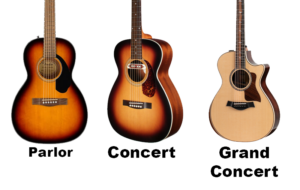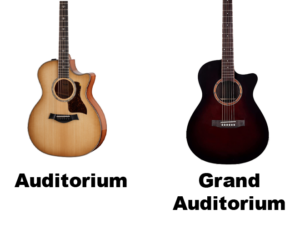Uncategorized
Exploring the Magic of Guitar Theory: Your Journey into Musical Understanding
Greetings, fellow music enthusiasts and aspiring guitarists! Are you ready to embark on a harmonious journey that will unravel the mysteries behind the melodies? Today, we’re delving into the captivating world of guitar theory – a realm where the secrets of music come to life, guiding you on a path to deeper understanding and creative expression. Whether you’re a beginner eager to unlock the language of music or a seasoned player looking to enhance your skills, this guide will introduce you to the enchanting universe of “Guitar Theory.” So, grab your guitar, find a comfortable spot, and let’s dive into the harmonious world of musical exploration and creativity!
Demystifying Guitar Theory: The Language of Music
Think of guitar theory as a treasure map that leads you to the heart of musical knowledge. Just as words create sentences and stories, guitar theory provides the building blocks for creating melodies, harmonies, and rhythms that resonate with emotion and depth. It’s the language that musicians use to communicate and understand the intricacies of music. By delving into guitar theory, you’re embarking on a journey that empowers you to compose, improvise, and play with confidence and creativity.
Essential Concepts of Guitar Theory: Unlocking the Magic
Let’s explore some fundamental concepts of guitar theory that will pave the way for your musical journey:
1. Notes and the Musical Alphabet: Music is built upon a sequence of notes, much like the letters of the alphabet. The musical alphabet consists of A, B, C, D, E, F, and G, which repeat in cycles.
2. Scales and Intervals: Scales are sequences of notes that form the foundation of melodies. Intervals describe the distance between two notes and play a crucial role in creating melodies and harmonies.
3. Chords and Harmony: Chords are formed by playing multiple notes simultaneously. Understanding chord construction allows you to create progressions that convey different emotions and moods.
4. Keys and Key Signatures: Keys provide a framework for organizing notes and chords within a song. Key signatures indicate which notes are sharp or flat in a particular key.
5. Time Signatures and Rhythms: Time signatures dictate the rhythmic structure of a piece. Rhythms define the patterns of long and short sounds that create the groove of a song.
Guitar Theory in Action: Applying Knowledge to Playing
Now, let’s see how guitar theory comes to life as you play your instrument:
1. Scales and Soloing: Understanding scales empowers you to create captivating solos and improvisations. By knowing the notes within a scale, you can confidently explore the fretboard and express your musical ideas.
2. Chord Progressions: Guitar theory enables you to craft chord progressions that evoke specific emotions. Experimenting with different chord combinations adds depth and character to your compositions.
3. Transposing Songs: Transposing involves changing the key of a song to suit your vocal range or preferred playing style. Guitar theory provides the tools to transpose songs seamlessly.
4. Analyzing Music: Guitar theory allows you to dissect and understand the structure of songs. Analyzing music helps you appreciate the choices made by composers and songwriters.
Tips for Embracing Guitar Theory: Your Path to Mastery
As you embark on your journey to embrace guitar theory, consider these tips to enhance your understanding and skills:
1. Start with Basics: Begin by learning the musical alphabet, understanding the concept of whole steps and half steps, and exploring the major scale.
2. Practice Regularly: Dedicate time to practice scales, chords, and intervals. Consistent practice reinforces your knowledge and improves your playing.
3. Apply to Playing: As you learn new concepts, apply them to your playing. Experiment with scales, create chord progressions, and analyze songs to solidify your understanding.
4. Experiment with Creativity: Use guitar theory as a foundation for your creative explorations. Experiment with different scales, chords, and progressions to develop your unique musical style.
Conclusion: Embrace the Beauty of Guitar Theory
Congratulations, you’ve embarked on a melodic journey through the captivating universe of guitar theory. As you delve into notes, scales, chords, and progressions, you’ll unlock the door to a deeper understanding of music. Keep learning, keep practicing, and keep embracing the magic of guitar theory. It’s your key to a world of musical creativity and expression, where each strum, pluck, and chord resonates with knowledge and harmony. So, keep strumming, keep smiling, and let the enchanting world of guitar theory guide you toward a realm of melodies that captivate the heart and awaken the soul, one musical concept at a time!
Uncategorized
Acoustic Guitar Sizes: Finding Your Perfect Fit
Have you ever wondered how the size of an acoustic guitar affects its sound? From the intimate, focused tones of a parlor guitar to the deep, resonant sound of a jumbo, the size and shape of an acoustic guitar can have a profound impact on its sonic characteristics.”
In this article, we’ll explore acoustic guitar sizes, their variations, and how to choose the perfect size that suits your needs.
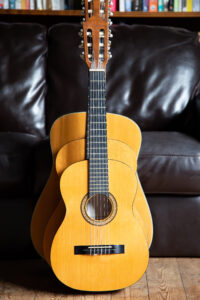 Understanding Acoustic Guitar Sizes: A Musical Puzzle
Understanding Acoustic Guitar Sizes: A Musical Puzzle
Acoustic guitar sizes refer to the dimensions and proportions of the guitar body, which significantly influence the instrument’s tonal characteristics, projection, and playability.
Just like pieces of a musical puzzle, different sizes create distinct voices that cater to various playing styles and preferences.
The Spectrum of Acoustic Guitar Sizes
Acoustic guitars come in several sizes, each with its unique qualities and attributes. Let’s explore some common acoustic guitar sizes and their defining features:
-
-
Parlor Guitar: The parlor guitar is petite and charming, making it an ideal companion for intimate settings.
The name comes from the rooms in which the guitar was typically played in the late 19th century.
Some famous musicians who have been known to use the parlor guitar are, Eric Clapton, Mark Orton, Ed Sheehan, and John Mayer
Its smaller size results in a focused and balanced sound, perfect for fingerpicking and folk music.
-
Concert Guitar: Slightly larger than the parlor guitar, the concert guitar offers enhanced projection and volume. It strikes a balance between portability and sound, making it versatile for various genres.
It is often used in classical music and flamenco music with its full sound.
-
Grand Concert Guitar: With a larger body than the concert guitar, the grand concert guitar boasts a fuller sound and improved tonal complexity.
A popular choice for those who have a smaller stature and require an instrument that’s built to a shorter scale. Great choice for traveling musicians who often play live performances.
It’s suitable for fingerstyle playing and intricate arrangements.
-
Auditorium Guitar: The auditorium guitar, also known as the orchestra model (OM), features a well-rounded sound with a pronounced midrange.
More shallower than the dreadnought and narrower in width than a concert guitar. An Auditorium guitar brings the body closer to the player, making it feel more intimate and comfortable for stage use.
Some famous musicians who play it include Ed Sheeran, John Mayer, and Eric Clapton.
-
Grand Auditorium Guitar: Expanding on the auditorium guitar’s design, the grand auditorium guitar offers a versatile sound profile with enhanced bass response and overall volume.
It is a versatile mid-sized guitar that is a good choice for those who want a single guitar to travel with. The tone is great for strumming and picking. It performs well on stage and in the studio.
It suits a wide range of musical genres.
-
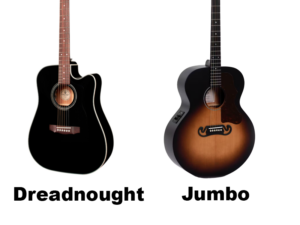 Dreadnought Guitar: The Dreadnought is a true icon, known for its bold and powerful sound. Its large body produces a strong bass response, making it ideal for strumming and vocal accompaniment.
Dreadnought Guitar: The Dreadnought is a true icon, known for its bold and powerful sound. Its large body produces a strong bass response, making it ideal for strumming and vocal accompaniment.This guitar is known for its powerful voice and lower-mid-rich tones that make it a favored choice for country artists. Although it is a popular choice for musicians of all genres.
Some famous musicians who play the dreadnought guitar include Hank Williams Jr, Elvis Presley, Keith Richards, Thom Yorke, and Kurt Cobain.
The original dreadnought guitars were made for the Oliver Ditson Company and featured mahogany backs and sides and spruce tops.
-
Jumbo Guitar: The jumbo guitar lives up to its name with a massive body that delivers robust volume and a deep bass presence.
This is the largest of the guitar family with a deeper body than the popular dreadnought. The body is wider and deeper than traditional acoustic guitars, which gives them a unique appearance.
Jumbo’s are well suited to rhythm guitarists in country and folk rock, and produce a deep rich sound favored by heavy strummers. Some famous musicians who play this guitar are Elvis Presley, George Harrison of the Beatles, Neil Young, Sheryl Crow, and Pete Townshend of The Who.
Choosing the Right Acoustic Guitar Size for You
Selecting the right acoustic guitar size involves considering factors such as playing style, comfort, and tonal preferences. Here are some steps to guide you on your quest:
-
Identify Your Playing Style: Determine whether you lean towards fingerpicking, strumming, or a mix of both. Different sizes excel in different playing styles, so choose one that complements your technique.
-
Consider Body Comfort: Hold and play guitars of various sizes to assess comfort. A guitar that fits well against your body ensures a pleasant playing experience, especially during extended sessions.
-
Evaluate Sound Preferences: Listen to the sound produced by different acoustic guitar sizes. Pay attention to tonal qualities, such as warmth, brightness, and projection, to find the one that resonates with your musical taste.
The Influence of Acoustic Guitar Sizes on Music
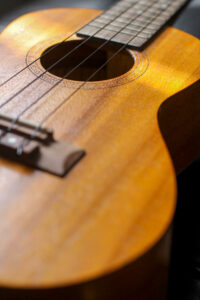 Acoustic guitar sizes and shapes can have a significant impact on the sound of the instrument.
Acoustic guitar sizes and shapes can have a significant impact on the sound of the instrument.The size of the guitar body type also relates to the volume of air within the instrument. Changes to the air capacity of the body will emphasize specific frequencies. A smaller body will have a more focused sound centered on higher frequencies, while a larger body will produce deeper low-end frequencies.
Body dimensions can provide some indication of the tone you might expect, but other factors exert a profound influence, too. Much depends on the tonewoods used to construct the body and the shape, size, and layout of the braces.
Finding Harmony in Acoustic Guitar Sizes
By delving into the nuances of size, sound, and playability, you’ve gained insights that will guide you toward the perfect fit for your musical aspirations.
As you continue your exploration, remember that each acoustic guitar size has its own unique voice and character. Embrace the joy of trying different sizes, celebrate the nuances of their sounds, and let your heart lead you to the one that resonates with your musical soul.
-
Uncategorized
Mastering the F Bar Chord: A Guide to Tackling the Mighty F Bar Chord
Hello, aspiring guitarists and music lovers! Are you ready to dive into the world of bar chords and conquer the formidable F bar chord? In this guide, we’ll unravel the mysteries of the F bar chord, learn how to play it with confidence, and discover how this versatile chord can enhance your playing. Whether you’re a beginner seeking to expand your chord repertoire or a guitarist eager to refine your skills, this article is your gateway to mastering the challenging yet rewarding “F bar chord.” So, grab your guitar, find a cozy spot, and let’s embark on a harmonious journey of musical exploration!
Demystifying the F Bar Chord: An Adventure in Guitar Mastery
Think of the F bar chord as a musical challenge that, once conquered, opens doors to a world of musical possibilities. Also known as the F major bar chord, this shape allows you to play the F major chord in various positions along the fretboard. Let’s embark on a journey to unlock the mechanics of playing the F bar chord and discover its potential to enrich your guitar-playing journey.
Mastering the F Bar Chord: A Step-by-Step Approach
To play the F bar chord, follow these simple steps:
1. Positioning: Place your index finger flat across all the strings at a specific fret. For the F bar chord, we’ll start with the 1st fret.
2. Bar with Index Finger: Press down firmly on all the strings with your index finger, creating a “bar” across the fret.
3. Finger Placement: Position your other fingers to form the shape of the F major chord. Your middle finger goes on the 2nd fret of the G string (the third thickest string), your ring finger on the 3rd fret of the A string (the fifth thickest string), and your pinky on the 3rd fret of the D string (the fourth thickest string).
4. Strumming: Focus on strumming the A, D, G, B, and high E strings (the thickest through first string) while avoiding the low E string (the sixth string).
5. Sound Check: Strum the strings individually to ensure each note rings out clearly. Adjust finger placement if needed for optimal resonance.
Overcoming F Bar Chord Challenges: Tips and Techniques
Mastering the F bar chord may require some patience and practice. Here are a few strategies to help you conquer this chord:
1. Build Finger Strength: Strengthen your index finger by practicing pressing down on the strings along the fretboard.
2. Use the Side of Your Finger: Press down on the strings with the bony side of your index finger, ensuring even pressure across the fret.
3. Finger Placement: Experiment with finger placement to find the angle that provides the best sound without muting any strings.
F Bar Chord Variations: Expanding Your Repertoire
Once you’ve mastered the basic F bar chord, you can explore various chord variations and positions:
1. Move It Up the Neck: Slide the F bar chord shape up the fretboard to play different major chords.
2. Minor Chords: Modify the F bar chord shape to play minor chords by altering the finger positions.
F Bar Chord in Action: Musical Inspiration
The F bar chord’s versatility makes it a valuable tool in your musical arsenal. Here are a few popular songs that feature the F bar chord:
1. “Wonderwall” by Oasis: The F bar chord adds a distinctive flavor to the intro of this iconic hit, capturing its melodic essence.
2. “Hey There Delilah” by Plain White T’s: This heartfelt ballad utilizes the F bar chord, contributing to its emotive and romantic vibe.
Tips for Mastery: Conquering the F Bar Chord
As you embark on your journey to master the F bar chord, keep these tips in mind:
1. Consistent Practice: Dedicate regular practice sessions to build muscle memory and familiarity with the F bar chord shape.
2. Patience and Persistence: Bar chords can be challenging, but with time and persistence, you’ll see steady improvement.
3. Smooth Transitions: Practice transitioning between the F bar chord and other chords to enhance your playing fluency.
Conclusion: Elevate Your Playing with the F Bar Chord
Congratulations, you’ve unlocked the powerful F bar chord and added a valuable tool to your guitar-playing repertoire! By mastering this chord, you’re opening doors to a world of musical expression and creativity. As you strum, experiment with variations, and play songs, you’ll discover the ability of the F bar chord to enrich your playing and add depth to your musical creations. Keep practicing, keep experimenting, and keep embracing the versatile F bar chord. It’s your key to unlocking a world of melodic exploration, where each note resonates with confidence and charm. So, pick up your guitar, embrace the challenge, and let the captivating F bar chord guide you toward a realm of melodies that captivate the senses and elevate the spirit, one beautifully barred note at a time!
Uncategorized
How to Hold a Guitar: Your Guide to Proper Guitar Posture
Greetings, aspiring guitarists and music enthusiasts! Are you ready to embark on a journey of proper guitar posture and discover the essential techniques for holding your guitar with comfort and ease? In this guide, we will explore the fundamental principles of how to hold a guitar, ensuring that you set the foundation for a lifetime of enjoyable playing. Whether you’re a beginner taking your first steps in the world of music or someone seeking to refine your technique, this article is your roadmap to mastering the art of holding a guitar. So, grab your instrument, find a comfortable spot, and let’s dive into the harmonious realm of proper guitar posture!
Why Proper Guitar Posture Matters
Before we delve into the specifics of how to hold a guitar, let’s understand why proper posture is crucial. Maintaining the correct posture not only enhances your playing technique but also prevents discomfort, strain, and potential injuries. Whether you’re strumming chords or shredding solos, adopting the right posture ensures optimal control over the instrument and facilitates fluid movement along the fretboard.
Sitting Position: The Foundation of Proper Posture
When sitting down to play the guitar, follow these steps for optimal posture:
1. Find a Comfortable Chair: Choose a chair with a straight back and no armrests. Ensure that your feet are flat on the ground, creating a stable base.
2. Place the Guitar: Sit on the edge of the chair, allowing the guitar body to rest on your right thigh (if you’re right-handed) or left thigh (if you’re left-handed).
3. Angle the Neck: Tilt the neck of the guitar slightly upward, maintaining a natural angle between your wrist and the neck.
4. Curved Back and Shoulders: Keep your back comfortably straight, avoiding slouching. Relax your shoulders and let your arms hang naturally.
5. Elbow Placement: Position your right forearm (or left forearm) on the upper bout of the guitar, ensuring your forearm and elbow are not raised too high.
Standing Position: Rocking the Guitar Onstage
If you prefer to stand while playing, follow these guidelines:
1. Adjust the Strap: Use a guitar strap to adjust the guitar’s height. The guitar should rest at a comfortable level on your body.
2. Balanced Weight: Distribute the weight of the guitar evenly across your body by adjusting the strap length.
3. Natural Arm Position: Keep your picking hand relaxed, with your forearm parallel to the floor. Maintain a slight bend in your elbow for ease of movement.
4. Stance and Mobility: Stand with your feet shoulder-width apart to maintain stability. Bend your knees slightly for flexibility and better control.
Guitar Position: Fretting Hand Technique
The position of your fretting hand greatly influences your playing technique:
1. Thumb Placement: Place your thumb behind the guitar neck, supporting it without gripping too tightly. This allows your fingers to press down on the strings more effectively.
2. Finger Arch: Maintain a curved finger arch when pressing down on the strings. Avoid letting your fingers collapse, as this can lead to muted or buzzed notes.
3. Finger Placement: Position your fingers perpendicular to the frets, ensuring that you press down on the fingertips and not the pads.
Strumming and Picking Hand Technique
Your strumming or picking hand technique complements your fretting hand posture:
1. Picking Hand Position: Hold the pick between your thumb and index finger. Keep your wrist relaxed and allow your hand to move freely across the strings.
2. Strumming Arm Movement: For strumming, use a fluid motion from your elbow, creating a pendulum-like movement. Experiment with various strumming patterns.
3. Palm Muting: When palm muting, lightly rest the side of your picking hand near the bridge to achieve a muffled sound.
Additional Tips for Proper Guitar Posture
Here are some extra tips to ensure you’re holding the guitar correctly:
1. Practice Patience: It may take time for your body to adjust to the proper posture. Be patient and allow yourself to build muscle memory gradually.
2. Regular Breaks: Take breaks during practice sessions to stretch and relax your muscles. This helps prevent strain and fatigue.
3. Mirror Check: Practice in front of a mirror to visually assess your posture and technique. Adjust as needed for improved alignment.
Conclusion: Mastering the Art of Proper Guitar Posture
Congratulations, you’ve now embarked on a journey toward mastering the art of holding a guitar with proper posture! By following these guidelines and incorporating them into your practice routine, you’re setting the stage for a fulfilling and enjoyable musical journey. Remember, the foundation of proper posture is built upon comfort, relaxation, and balance. So, whether you’re strumming gentle chords or shredding fiery solos, your guitar-playing experience will be enhanced by the harmonious relationship you’ve cultivated between yourself and your instrument. So, pick up your guitar, assume the correct posture, and let the melodies flow with grace and precision, creating music that resonates with joy and creativity, one beautifully held note at a time!
-
advanced9 years ago
How to Play “Sleepwalk” on the 3-String Guitar! Guitar TABs Included!
-
beginner11 months ago
Exploring Different Guitar Types: A Beginner’s Guide
-
advanced11 months ago
Fun and Effective Guitar Exercises: Elevate Your Playing with These 5 Simple Techniques
-
beginner9 years ago
3-String or 4-String? How to Decide Which is Right for You!
-
Blues Guitar8 years ago
Go-To Tunings for Blues Slide Guitar
-
Uncategorized11 months ago
Acoustic Guitar Sizes: Finding Your Perfect Fit
-
Blues Guitar7 years ago
Jack Daniel’s Whiskey Barrel Guitar: How It’s Made and What it Sounds Like
-
Guitars11 months ago
Bass vs Guitar: Exploring the Musical Journey

